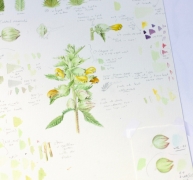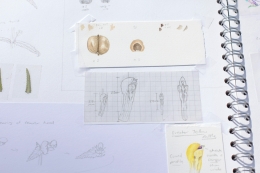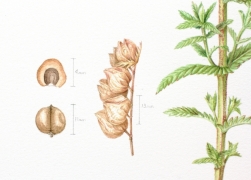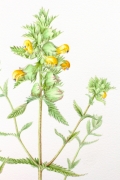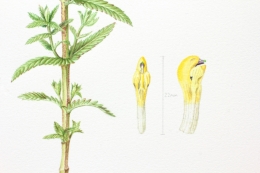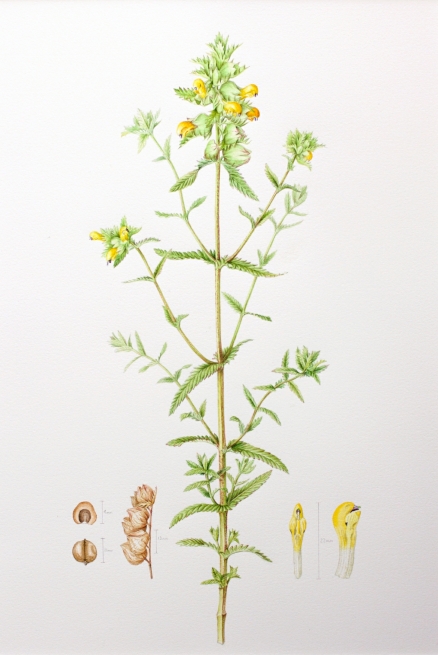
Greater Yellow-rattle
Rhinanthus angustifolius
Mid-May to August
Greater yellow-rattle grows in many locations on the Coulsdon Commons and, from attending talks and wildflower walks with the rangers, I quickly understood how important this species is in supporting the chalk flower habitat. The greater yellow-rattle is hemi-parastic and keeps the grasses at bay, allowing other species to flourish. The flowers grow on tall spikes and emerge from a delicate, inflated casing which is the calyx of the flower; this was quite a challenge to depict as the casings are very delicate and light in colour. Later in the season, the seedheads are very easy to spot and also to hear; the name of the plant comes from the rattling of these seedheads in the wind.
I spent quite a lot of time trying to understand and observe the difference between this and the more common yellow rattle; there is quite a lot of greater yellow rattle growing in the Coulsdon area, but nationally it is very rare. One difference between the species is that the itself is larger and has longer violet teeth on the upper lip. It also has a longer, more curved tube than yellow rattle.
